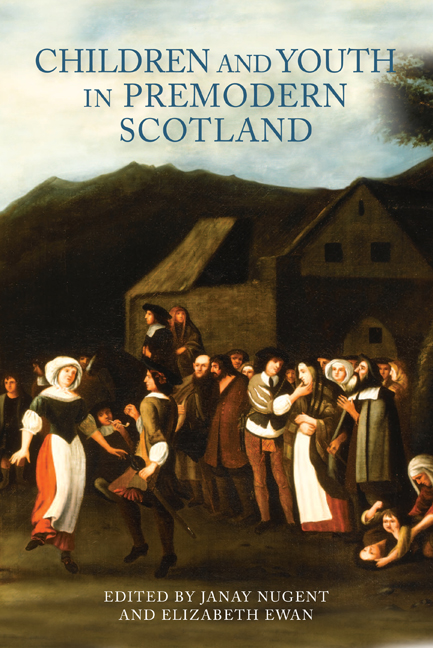Book contents
- Frontmatter
- Dedication
- Contents
- List of Illustrations
- Notes on Contributors
- Acknowledgments
- Abbreviations and Conventions
- Introduction: Adding Age and Generation as a Category of Historical Analysis
- Part I Experiences of Childhood and Youth
- Part II Representations of the Young
- Part III Constructing the Next Generation
- Envoi In Their Own Words: A Mother to Her Son
- Guide to Further Reading
- Index
- St Andrew Studies in Scottish History
6 - Depictions of Childhood in David Allan’s Family Group Portraiture of the 1780s
Published online by Cambridge University Press: 11 May 2021
- Frontmatter
- Dedication
- Contents
- List of Illustrations
- Notes on Contributors
- Acknowledgments
- Abbreviations and Conventions
- Introduction: Adding Age and Generation as a Category of Historical Analysis
- Part I Experiences of Childhood and Youth
- Part II Representations of the Young
- Part III Constructing the Next Generation
- Envoi In Their Own Words: A Mother to Her Son
- Guide to Further Reading
- Index
- St Andrew Studies in Scottish History
Summary
In the early 1780s David Allan (1744–96) produced two informal family group portraits in which Scottish children feature prominently. By exploring these portraits in depth and alongside archival letters, much can be learned about constructions of elite Scottish childhood during the Scottish Enlightenment and within the context of post-Union Britain. Contrariwise, this essay also demonstrates that by exploring past historical processes, concerns and issues through the lens of children and youth, we can further nuance our understanding of important historical events. More than merely reflecting contemporaneous ideas about childhood, such images were central to the presentation, representation, and re-presentation of childhood. Described by Marcia Pointon as ‘visual rhetoric’, portraiture played a crucial role in constructing what she calls ‘the ideology of childhood’ in the eighteenth century. Contemporary family portraiture depicted informality in the actions of its young subjects, as children were recognized as inhabiting a distinct stage of life, yet their importance in dynastic concerns remained an essential message in these portraits.
A society's construction of childhood does not map easily onto the lived reality of individual children, any more than a portrait can be read as a straightforward reflection of a child's life experience. In part, this is because portraits of children necessarily involved adults as much as they did their young subjects. Painted by adults, they were also commissioned by adults and reflected adult attitudes about children. In other words, the painted child embodied adult concerns, worries, hopes, and expectations for the individual depicted and, equally significantly, adult attitudes about the state of being that is childhood. A distinction needs to be made between children as real, sentient beings, and childhood as a cultural construct assembled in and through various discourses, including medical, legal, literary, painted and pedagogical. In this light, this essay is better understood as a history of images of Scottish childhood rather than as a history of Scottish children per se.
Where children have always been important subjects in European art history, prior to the eighteenth century their most conspicuous incarnation was as the Holy Child rather than every-day, earthly creatures. The eighteenth century saw a change in this pattern and a flourishing of child portraiture in Britain, with children depicted at the centre of family life in affective relationships with their parents.
- Type
- Chapter
- Information
- Children and Youth in Premodern Scotland , pp. 104 - 119Publisher: Boydell & BrewerPrint publication year: 2015



